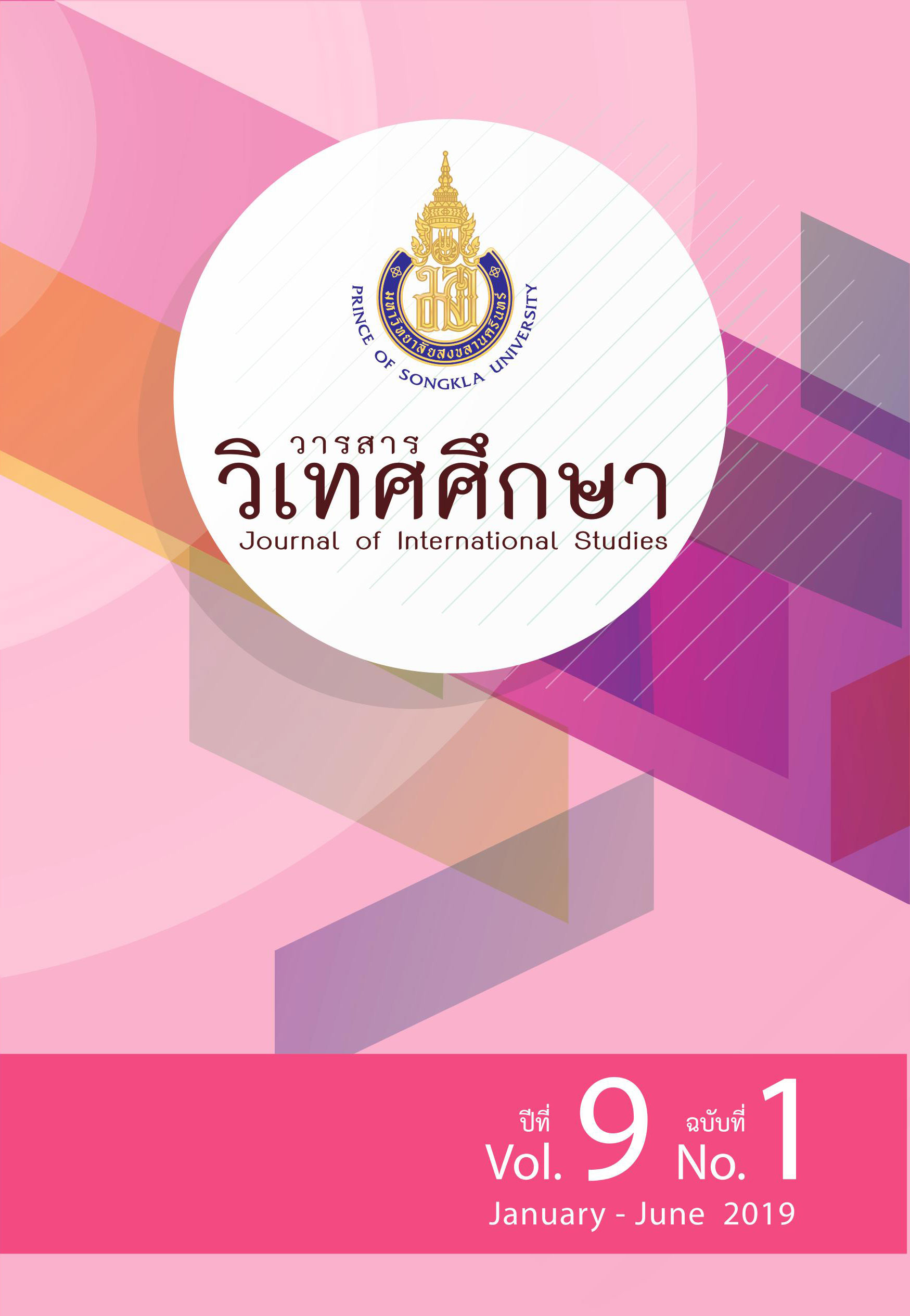Event-Related Potential to Dominance Emotional Thai Words and Digitized Sounds in Young Adults
Main Article Content
Abstract
The purposes of this research article were to compare young adults’ brainwave according to gender and personality, and interaction between gender and personality while the participants watched Thai words and listened to DigitizedSounds on dominance emotional. Paticipants were 80 undergraduate students, aged 20 to 24 years, Burapha University in Academic Year 2017. The research instruments were Dominance Emotional Thai Words and Digitized Sounds Tasks and Self-Assessment Mankin: SAM for Dominance dimension and the Neuroscan system. Data were analyzed using descriptive statistics and Two-way ANOVA. The results were as follows: 1) Brainwaves of male and female during the events were different at P100 and N100 occipital lobe; female brain responded faster than male. 2) Brainwaves of extrovert and ambivert during the events were different at P100 occipital lobe; ambivert brain responded faster than extrovert. 3) Interaction between gender and personality effected on P100 occipital lobe; female extrovert responded faster than others. On N100 occipital lobe; male extrovert responded faster than others.
Article Details
Statements and opinions expressed in articles herein are those of the authors and do not necessarily reflect the position of the editors or publisher.
Article, information, text, image, etc. which are published in Journal of International Studies, belong to Journal of International Studies. If anybody or any organization would like to use part or whole of them, they must receive written permission from Journal of International Studies before usage.
References
จันทร์เพ็ญ งามพรม, เสรี ชัดแช้ม และพีร วงศ์อุปราช. (2560). การพัฒนาระบบคลังคำภาษาไทยบรรทัดฐานด้านอารมณ์ความรู้สึก. วิทยาการวิจัยและวิทยาการปัญญา, 15(2), 162-178.
ชูชัย สมิทธิไกร. (2551). การแปลแบบทดสอบบุคลิกภาพ NEO-FFI เป็นภาษาไทย. เชียงใหม่: ภาควิชาจิตวิทยา คณะมนุษยศาสตร์มหาวิทยาลัยเชียงใหม่.
ธนปพน ภูสุวรรณ. (2561). การพัฒนาระบบคลังเสียงดิจิทัลด้านอารมณ์ความรู้สึกในบริบทของสังคมไทย. ดุษฎีนิพนธ์ปรัชญาดุษฎีบัณฑิต, สาขาวิชาการวิจัยและสถิติทางวิทยาการปัญญา, วิทยาลัยวิทยาการวิจัยและวิทยาการปัญญา, มหาวิทยาลัยบูรพา.
อภิชัย มงคล, ยงยุทธ วงศ์ภิรมย์ศานติ์, ทวี ตั้งเสรี, วัชนี หัตถพนม, ไพรวัลย์ ร่มซ้าย และวรวรรณ จุฑา. (2552). รายงานการวิจัย การพัฒนาและทดสอบดัชนีชี้วัดสุขภาพจิตคนไทย (Version 2007): กรุงเทพฯ: โรงพิมพ์ชุมนุมสหกรณ์การเกษตรแห่งประเทศไทย จำกัด.
Bear, M. F., Connors, B. W., & Paradiso, M. A. (2016). Neuroscience: exploring the brain (4th ed.). Hong Kong: Wolters Kluwer.
Brown, L., Sherbenou, R. J. & Johnsen, S. K. (2010). Test of nonverbal intelligence (4th ed). Austin, TX: PRO-ED.
Costa, P. T., & McCrae, R. R. (2010). NEOTM Personality Inventory-3 (NEOTM PI-3). Florida: Psychological Assessment Resources Inc.
Edmonds, W. A. & Kennedy, T. D. (2017). An applied reference guide to research designs: quantitative, qualitative, and mixed methods. California: Sage.
Filkowskia, M. M., Olsend, R. M., Dudaa, B., Wangera, T. J. & Sabatinellia, D. (2017). Sex differences in emotional perception: Meta analysis of divergent activation. NeuroImage, 147, 925–933.
Han, S.H., Gao, X.C., Humphreys, G.W. & Ge, J.Q. (2008). Neural processing of threat cues in social environments. Human Brain Mapping, 29(8), 945–957.
Handy, T. C. (2005). Event-Related Potentials: A Methods Handbook. New York: The Bradford books.
Kempton, M. J. et al. (2009). The effects of gender and comt val158met polymorphism on fearful facial affect recognition: an fMRI study. International Journal of Neuropsychopharmacology, 12(3), 371–381.
Lotrakul, M., Sumrithe, S., & Saipanish, R. (2008). Reliability and validity of the Thai version of the PHQ-9. BMC Psychiatry, 8, 46.
Lucas, R. E., & Baird, B. M. (2004). Extraversion and emotional reactivity. Journal of Personality and Social Psychology, 86(3), 473-485.
Luck, S. J. (2014). An introduction to the event-related potential technique (2nd ed.). Cambridge, MA: MIT Press.
Oldfield, R. C. (1971). The assessment and analysis of handedness: The Edinburgh inventory. Neuropsychologia, 9(1), 97-113. Retrieved from http://gade.psy.ku.k/Readings/Oldfield1971.pdf
Russell, J. A., & Mehrabian, A. (1977). Evidence for a three-factor theory of emotions. Journal of research in Personality, 11(3), 273-294.
Vuoskoski, J. K. & Eerola, T. (2011). The role of mood and personality in the perception of emotions represented by music. Cortex, 47(9), 1099-1106.
Whittle, S., Yucel, M., Yap, B. H. M., & Allen, B. N. (2011). Sex differences in the neural correlates of emotion: Evidence from neuroimaging. Biological Psychology, 87(3), 319-333.


